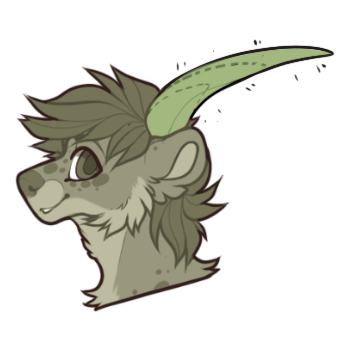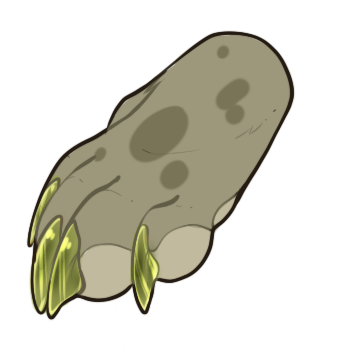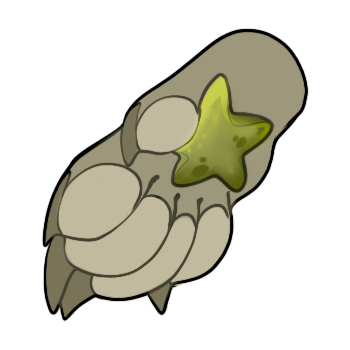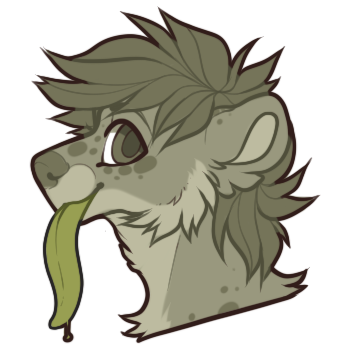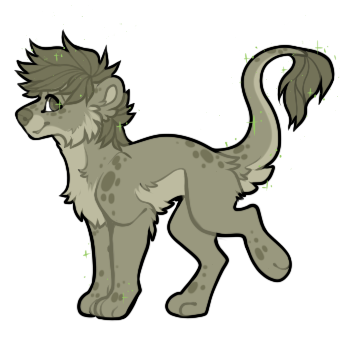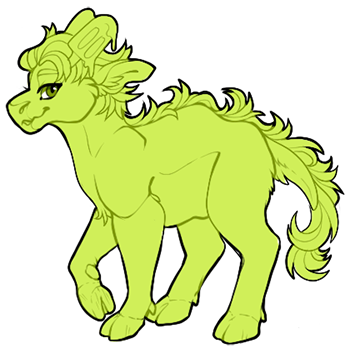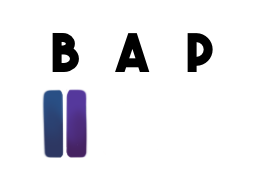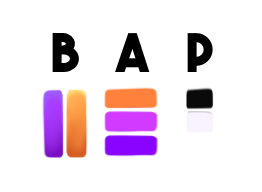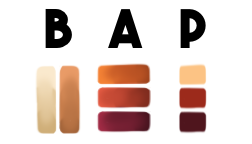Traits
Larger Horns (Rare)
Kiamaras with this trait have larger-than-average horns, or larger-than-average antennae should they have the Antennae Growths trait.
These horns are judged based on the size guides found with the Kiamara lineset being used.
You can find all size guides and linesets here!
Metal Claws (Rare)
Kiamaras with this trait have claws made of a metal or metal alloy. These can be any colour.
These types of claws cannot have any sparkle or particles unless used in conjunction with a Sparkle trait.
Shaped Paw Pads (Rare)
Kiamaras with this trait have paw pads that are a different shape than the average Kiamaras.
This can be any shape desired and can even effect the toe beans.
Colour Changing Paw Pads (Rare)
Kiamaras with this trait have paw pads that can change colour at will.
This can be a different shade or an entirely new colour. There is no limit on how many different colours the paw pads can change into with this trait.
Kiamaras with either a Major or Minor power can have the Colour Changing Paw Pads trait as part of their power, however, it can only be seen when their powers are in use and will not be passed in breedings.
Colour Changing Claws (Rare)
Kiamaras with this trait have claws that can change colour at will.
This can be a different shade or an entirely new colour. There is no limit on how many different colours the claws can change into with this trait.
Kiamaras with either a Major or Minor power can have the Colour Changing Claws trait as part of their power, however, it can only be seen when their powers are in use and will not be passed in breedings.
Oozing Teeth (Rare)
Kiamaras with this trait have teeth that seem to drip or ooze a liquid.
The liquid can be depicted as frozen.
The liquid can be a toxin/poison that can cause minor burning or temporary paralysis at most. The toxin/poison cannot be fatal.
This liquid cannot be made of blood or water and cannot glow or sparkle without using either the Glowing Teeth or Sparkle traits.
Frilled (Rare)
Kiamaras with this trait can have up to 4 small Frills/Crests on their face/neck.
These Frills can be immovable OR retract/extend at will.
Ears must still be visible on the Kiamara unless used in conjunction with the No Ears trait.
Cannot be used in conjunction with the Crested trait.
Must be able to fit inside the Very Rare Fin size box present on the Official Line Sets. **
**this is temporary until we make a new guide for this trait.
Colour Changing Nose (Rare)
Kiamaras with this trait have a nose that can change colour at will.
This can be a different shade or an entirely new colour. There is no limit on how many different colours the nose can change into with this trait.
Kiamaras with either a Major or Minor power can have the Colour Changing Nose trait as part of their power, however, it can only be seen when their powers are in use and will not be passed in breedings.
Larger Canines (Rare)
Kiamaras with this trait have tusks or fangs that reach past the bridge of the nose or the chin.
Fangs Must reach past the chin line.
Tusks Must reach the nose bridge.
Neither Fangs nor Tusks can be smaller than these guides for this trait, however they can be any shape and there is no limit to how long they can be!
The teeth must reach past these guidelines. There is no limit to how big or small they can be as long as they reach past these limits.


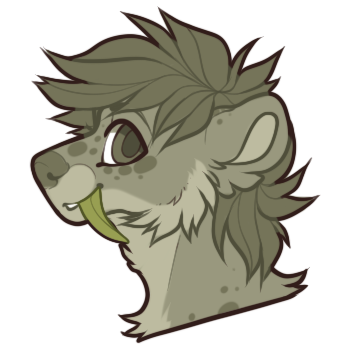

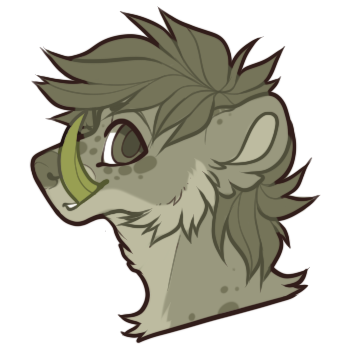

Metal Teeth (Rare)
Kiamaras with this trait have teeth made of metal.
These can be any colour and should be shiny.
These cannot have any sparkle unless used in conjunction with a Sparkle trait.
Long Tongue (Rare)
Kiamaras with this trait have long tongues compared to the average Kiamara.
The average Kiamara's tongue goes to the bottom of the chin.
Gills (Rare)
Kiamaras with this trait have gills.
These gills can only be placed on the neck unless used in conjunction with the Body Gills trait.
Cannot be used in conjunction with the Vents trait.
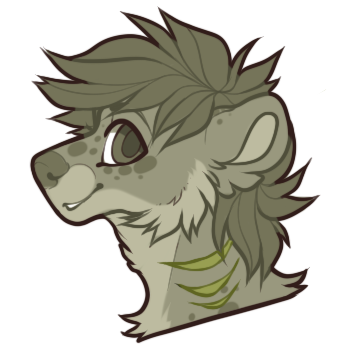
this is a good example of the Gills trait as they are located on the neck. Alternatively they can also be seen on the throat area or the back of the neck.
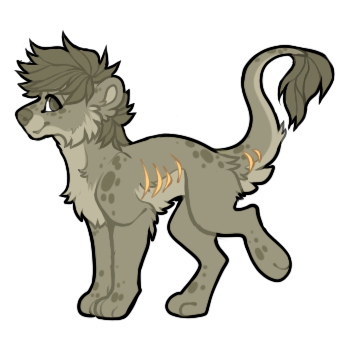 Gills that are located on the Body or Tail would be Very rare, and would not be covered by this trait.
Gills that are located on the Body or Tail would be Very rare, and would not be covered by this trait.
Multi-Placed Sparkle (Rare)
This Kiamara Sparkles on more than one part of their body. Cannot sparkle on every part of their body.
If we feel that the areas chosen on your Kiamara too closely resemble Full-Body Sparkle during a design update/myo submission, we may ask for you to reduce the number of areas present with the sparkle trait.
- Horns, should they have them.
- Eyes
- Nose
- Pawpads
- Claws
- Limbs
- Multiple Markings
- The main body
- Neck
- Face
- Ears
- Hair (both head, tail, and mane all count as one)
- On a body modification
Bubblegum Gene (Rare)
This trait grants the Dromedairy the Bubblegum colour pallette.
In breedings, this can be passed down as either a dominant or recessive gene.
If a dromedairy has this gene as recessive, in order for offspring to obtain it the other parent must either have this gene as a dominant gene, or a recessive gene.
Cannot pass to offspring as a dominant gene if only one parent carries the recessive gene and has a 50% chance of becoming dominant if both parents have it as recessive if rolled in a breeding.
Heartichoke Gene (Rare)
This trait grants the Dromedairy the Heartichoke gene that works differently than most colouration traits.
In breedings, this can be passed down as either a dominant or recessive gene.
If a dromedairy has this gene as recessive, in order for offspring to obtain it the other parent must either have this gene as a dominant gene, or a recessive gene.
Cannot pass to offspring as a dominant gene if only one parent carries the recessive gene and has a 50% chance of becoming dominant if both parents have it as recessive if rolled in breeding.
Those who have this colouration have their Base colour palette on their current dominant colouration replaced with the colours of this gene.
Lung Leaf Gene (Rare)
This trait grants the Dromedairy the Lung Leaf gene that works differently than most colouration traits.
In breedings, this can be passed down as either a dominant or recessive gene.
If a dromedairy has this gene as recessive, in order for offspring to obtain it the other parent must either have this gene as a dominant gene, or a recessive gene.
Cannot pass to offspring as a dominant gene if only one parent carries the recessive gene and has a 50% chance of becoming dominant if both parents have it as recessive if rolled in breeding.
Those who have this colouration have their Base colour palette on their current dominant colouration replaced with the colours of this gene.
Soda Gene (Rare)
This trait grants the Dromedairy the Soda colour pallette.
In breedings, this can be passed down as either a dominant or recessive gene.
If a dromedairy has this gene as recessive, in order for offspring to obtain it the other parent must either have this gene as a dominant gene, or a recessive gene.
Cannot pass to offspring as a dominant gene if only one parent carries the recessive gene and has a 50% chance of becoming dominant if both parents have it as recessive if rolled in a breeding.
Iridescence Gene (Rare)
This trait grants the Dromedairy the Iridescence colour pallette.
In breedings, this can be passed down as either a dominant or recessive gene.
This can go on top of a full gene pallette and replace that pallette's accent colours with this one's.
Accents can be any of the colours present, and can change to as many of the other colours present on the pallette.
If a dromedairy has this gene as recessive, in order for offspring to obtain it the other parent must either have this gene as a dominant gene, or a recessive gene.
Cannot pass to offspring as a dominant gene if only one parent carries the recessive gene and has a 50% chance of becoming dominant if both parents have it as recessive if rolled in a breeding.
Friendelion Gene (Rare)
This trait grants the Dromedairy the Friendelion colour pallette.
In breedings, this can be passed down as either a dominant or recessive gene.
If a dromedairy has this gene as recessive, in order for offspring to obtain it the other parent must either have this gene as a dominant gene, or a recessive gene.
Cannot pass to offspring as a dominant gene if only one parent carries the recessive gene and has a 50% chance of becoming dominant if both parents have it as recessive if rolled in a breeding.

